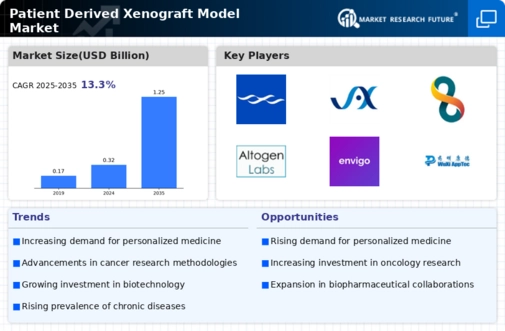Market Trends
Key Emerging Trends in the Patient Derived Xenograft Model Market
Building and upgrading tools for PDX modeling is an integral part of a fundamental plan. Companies invest heavily in improved PDX models that more accurately represent patient tumors because they understand how crucial these models are to developing drugs that address individual health needs. These firms seek to differentiate themselves within the market through offering advanced and clinically relevant PDX models which will allow them receive a larger market share. This helps address growing demand for better preclinical models that are predictive enough but also translatable from laboratory experiments to clinical situations.
In determining what part of the PDX Model Market you should target, pricing models and ease of entry are crucial. To keep up with limited budgets among researchers, there is the need for enterprises to figure out how to make PDX models that are high quality affordable. Some businesses may offer differentiated prices depending on how complex a plan becomes or if it includes additional services like drug testing for effectiveness.
If you want a larger hold in the PDX model market then come up with a proper marketing and sales plan. For example, companies spend money on marketing activities to make their PDX models known among researchers, drug makers and academic institutions. Targeted marketing activities that create strong brand footprint contribute to building trust and authority. Improving delivery networks at the same time ensures wide availability of PDX models across various study sites, pharmaceutical companies as well as contract research organizations.
In terms of key strategies in this area customization and tumor-specific methods have become more important. In order to address cancer’s heterogeneity therefore leading firms are incorporating more such personalized PDx models into their suite as they know each cancer case is unique hence experimentally generated models must be customized according to specific queries upon which insights can be made by researchers conducting studies. This could involve mutation in specific DNA sequences or expression of immune system components from patients or development of products from rare cancers.













Leave a Comment